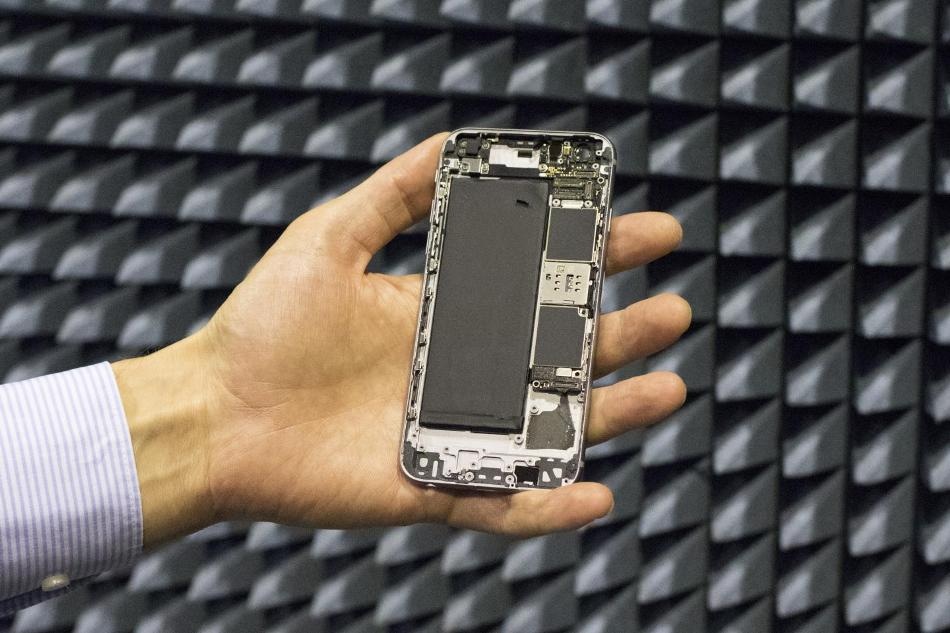Sep 1 2016
 The phone's antennas are placed in the top and bottom, which means that the phone's touch screen does not cover the entire phone. With the help of new developed method the antennas need less space and the phone display can be made larger and the phone design can be more free. (CREDIT - Aalto University)
The phone's antennas are placed in the top and bottom, which means that the phone's touch screen does not cover the entire phone. With the help of new developed method the antennas need less space and the phone display can be made larger and the phone design can be more free. (CREDIT - Aalto University)
A team of Radio Science and Engineering researchers from Aalto University have developed a technique that allows antennas to shift from the analog to the digital world. The antennas in use currently are often based on technology that was developed many years ago.
Traditionally one antenna works with either one or a few different frequencies. Now we can take advantage of advanced digital electronics and combine several small antenna elements to work together as one antenna that can be made to operate digitally with any frequency. In this way, many smartphone applications like GPS, Bluetooth and Wi-Fi will no longer need their own antennas. Instead, all of the phone’s data transfer can take place through one digitally controlled antenna. This in turn makes phone design easier and enables a larger screen size relative to phone size as the antenna does not require so much space.
Jari-Matti Hannula, Doctoral Candidate, Aalto University
The new antenna makes it feasible to realize the data transfer speed decided as the objective for the next generation of phones, which is 100 to 1000 times quicker than that of existing phones. Also, battery life will be enhanced thanks to the superior efficiency of the new technique.
Antenna Control Requires New Technology
With the new technique the antenna could have an even greater bandwidth, which leads to a higher data transfer speed and better efficiency. These new antennas may also dispose of the analog components that conventional antennas use to select the preferred frequency. This promotes antenna design and enables the development of highly compact antennas with enhanced radiation efficiency.
Antennas constructed using the typical technology make it is possible to attain either high efficiency or a wide frequency range, but not both at the same time. In recent times, radiation efficiency of antennas has been decreasing due to the frequency range used by mobile phones increasing.
Poor radiation efficiency causes a short transmission range, and this leads to network operators being forced to balance with a denser network of base stations. Energy in both the phone and the base station is wasted. Additionally, increasing the density of the network is expensive.
Professor of Radio Engineering Ville Viikari believes that the new technique will transform the fifth generation of mobile phones and sustain Finland as one of the top countries in the field of modern mobile phone antennas. For instance, the antenna type designed by the Department of Radio Science and Engineering at the start of the 21st century is the chief type in use in existing phones. Now is the time to build the solutions for advanced mobile devices.
The next step in the development process is under way with the commencement of tests in cooperation with Huawei using fifth generation mobile phone devices. We are also developing together with Aalto University researchers digital electronic systems for controlling the antennas.
Ville Viikari, Professor of Radio Engineering, Aalto University
The principles of the technique were published as a paper in IEEE Antennas and Wireless Propagation Letters journal.